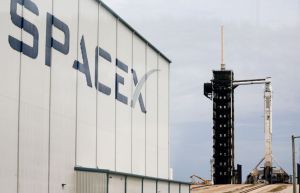
- Mysterious interstellar visitor Oumuamua's eccentric movement is nothing strange at all.
- Research says the emission of molecular hydrogen causes acceleration as a natural cause.
- Oumuamua is on its way out of the Solar System after arriving in October 2017.
The detection of a mysterious interstellar visitor, 'Oumuamua,' has perplexed researchers if natural causes compel its movement or not. It is the eccentric traits that have confused scientists about how it accelerates that did not have an answer.
Interstellar Visitor Moves by Natural Causes
Oumuamua, based on new research, achieves acceleration by the release of molecular hydrogen gas, reported Science Alert.
Based on the observations of Astro chemist Jennifer Bergner, the University of California, Berkeley, and astrophysicist Darryl Seligman of Cornell University both agree that this space rock in the shape of a cigar was one planet seed. It was ejected from where it came from after escaping a star's gravity. Compared to more out-of-this-world claims that explain the nature of Oumuamua taken at face value, noted Space.
The object first appeared in October 2017 when it made a relative path to the sun, then made a loop then rushed off the solar system into the cosmos. Unlike anything seen in the solar system, which has entranced astronomers.
It's shaped like a skinny cigar and very long, with a length of 400 meters and a shape that is no comet or asteroid shape. This cosmic object would spin while moving along, similar to the bottle on the side. The interstellar rock has no ice and does not release gases that cannot be detected like a comet. But the object's trajectory is not explained by gravity alone as an asteroid's trajectory would be.
Comets eject gases made of ice which accelerates them faster; that is what happens to the interstellar object, cited Knowledia. Oumuamua is like a cross between a comet and an asteroid, remarked the scientists.
Read Also : Scientists Plan Space Mission To Study Two Anomalous Interstellar Objects Once Detected in the Solar System
Research Explains Interstellar Visitor's Movement
Scientists have been speculating about the last visit of the enigmatic space visitor about its origin. Others speculate it is part of a planetesimal or baby planet still forming, but a collision rent asunder the shard we call Oumuamua.
It is a normal process when planets are forming that impacts usually happen. Even our earth is also a victim of planet smashers that resulted in the moon. But the interstellar cigar-shaped object separated and became a cosmic wanderer unbound by any pair or local gravitation.
Seligman co-authored a study in 2020 that suggests that 'Oumuamua's acceleration' is due to molecular hydrogen it ejects, causing acceleration.
What Is Molecular Hydrogen?
The molecular hydrogen gas is hard to pinpoint in space because it does not emit or reflect light that is hard to locate. If the outgassing of the space rock was happening, normal tracing of comets is impossible, as mentioned in Cosmos.
But this suggestion has been unconfirmed if 'Oumuamua is a molecular hydrogen iceberg' like the 2020 proposal of Bergner and Seligman. To prove it could be correct, they are modeling the process of containing molecular hydrogen, noted Astro Physical Journal. One explanation is the exposure to radiation if an object has water or ice.
When radiation hits the object, it causes water molecules that create hydrogen. Researchers explain the interstellar visitor called Oumuamua speeds via natural causes like molecular hydrogen created by splitting water molecules.
© 2025 HNGN, All rights reserved. Do not reproduce without permission.








